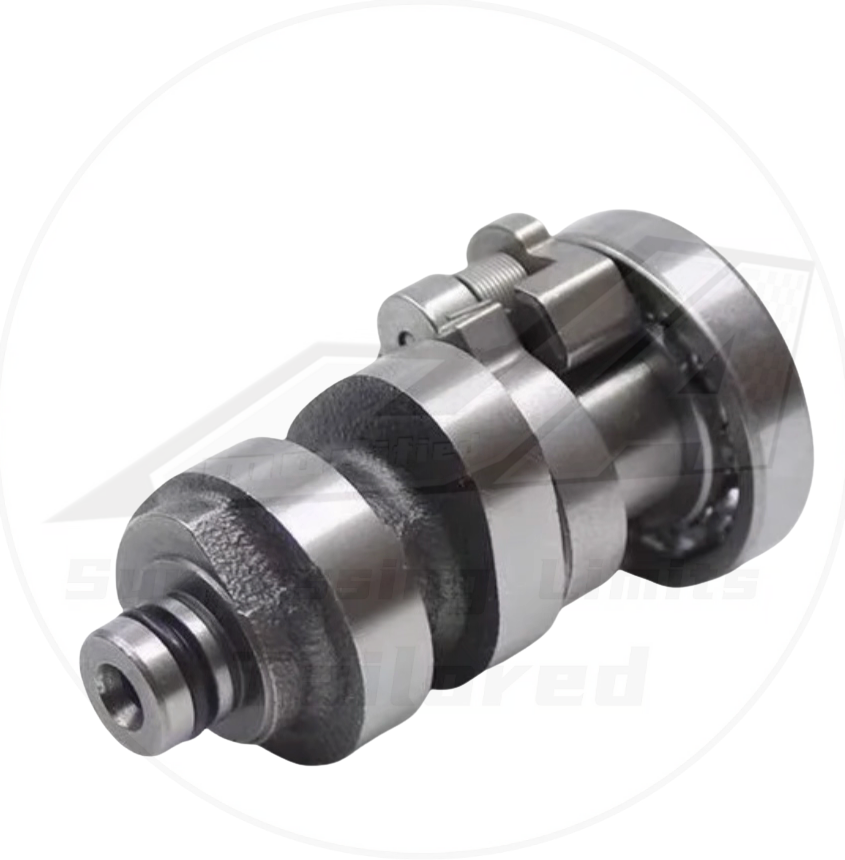Email cannot be empty
Password cannot be empty
Email format error
Email cannot be empty
Email already exists
6-20 characters(letters plus numbers only)
The password is inconsistent
Email format error
Email cannot be empty
Email does not exist
6-20 characters(letters plus numbers only)
The password is inconsistent


Motorcycle Camshafts: The Hidden Powerhouse Controlling Your Engine's Soul
Why Your Camshaft Deserves More Attention
While riders obsess over horsepower figures and exhaust notes, few appreciate the intricate ballet occurring between their motorcycle's camshafts and valves. This critical relationship determines whether your engine sings with mechanical harmony or coughs its way to catastrophic failure. Let's explore why understanding camshaft fundamentals separates casual riders from true mechanical connoisseurs.
The Four-Stroke Tango
Every combustion cycle relies on precise valve timing:
- Intake Stroke: Inlet valves open to admit air-fuel mixture
- Compression Stroke: Both valves seal for optimal compression
- Power Stroke: Valves remain closed during combustion
- Exhaust Stroke: Exhaust valves open to purge spent gases
Camshaft Anatomy 101
Modern motorcycle camshafts feature three critical components:
1. Lobes - The Mechanical Sculptors
These eccentric protrusions dictate:
- Valve lift height (0.2"-0.5" in most street bikes)
- Opening/closing velocity
- Dwell time at maximum lift
2. Journals - The Precision Pivots
High-grade bearing surfaces requiring:
- 0.0005"-0.002" oil clearance
- Surface hardness of 55-60 HRC
- Micro-polished finishes below 10Ra µin
3. Timing Marks - The Synchronization Points
Critical for aligning with:
- Crankshaft position (typically 1:2 rotation ratio)
- Ignition timing events
- Fuel injection pulses
DOHC vs SOHC: The Great Motorcycle Debate
Modern performance bikes overwhelmingly favor Dual Overhead Camshaft (DOHC) designs for three key reasons:
| Feature | DOHC Advantage |
|---|---|
| Valve Control | Independent optimization of intake/exhaust profiles |
| RPM Capability | Reduced mass allows 14,000+ RPM stability |
| Maintenance | Simpler shim-under-bucket adjustment |
Performance Tuning Secrets
Modifying camshafts requires understanding these interlinked factors:
Duration - The Time Factor
Measured in crankshaft degrees:
- Street bikes: 240°-280° duration
- Race engines: 300°+ duration
- Overlap period (both valves open) critical for scavenging
Lift - The Height Equation
Balancing flow vs mechanical stress:
- Increased lift improves volumetric efficiency
- Excessive lift causes spring surge and valve float
- Modern sportbikes use 10-12mm lift
Camshaft Maintenance Myths Busted
Three crucial but often overlooked maintenance aspects:
1. Break-In Procedures
New camshafts require:
- Zinc-rich break-in oil
- Varying RPMs for first 30 minutes
- Immediate oil change after initial run
2. Wear Patterns
Abnormal wear indicators:
- Pitting: Oil starvation or contamination
- Scoring: Improper clearance or alignment
- Polishing: Excessive valve spring pressure
3. Timing Chain Tension
Critical for DOHC engines:
- 0.5-1.0mm chain deflection standard
- Automatic tensioners require periodic inspection
- Stretching beyond 3% requires replacement
The Future of Camshaft Technology
Emerging innovations changing the game:
- Electro-hydraulic variable valve timing (VVT)
- Laser-clad lobe coatings for reduced friction
- 3D-printed hollow camshafts with integrated oil channels
Pro Tips for Riders
- Always verify cam timing after engine reassembly
- Use dial indicators for precise valve clearance measurements
- Consider cam degreeing when chasing ultimate performance
- Monitor oil pressure - <5psi per 1,000 RPM indicates wear
Understanding your motorcycle's camshafts transforms how you ride, maintain, and modify your machine. These unassuming components don't just open valves - they orchestrate the very breath of your engine. Whether you're chasing podium finishes or perfect reliability, camshaft knowledge proves its worth with every revolution of your crankshaft.

